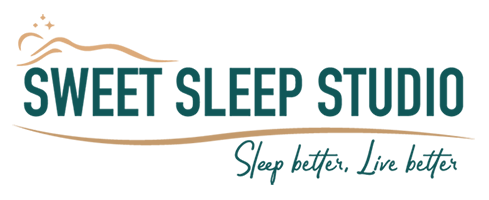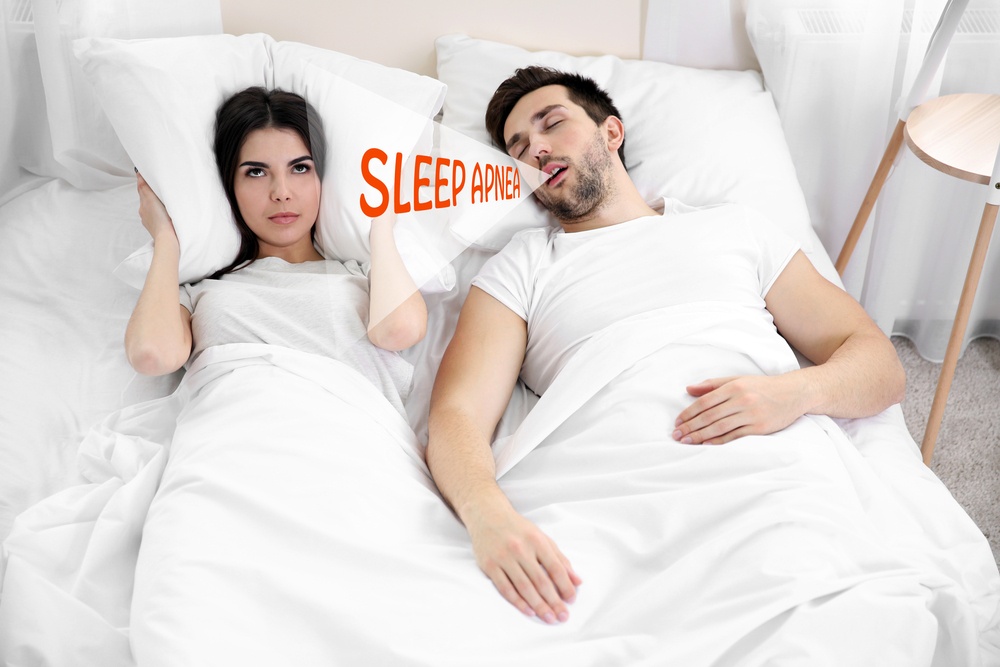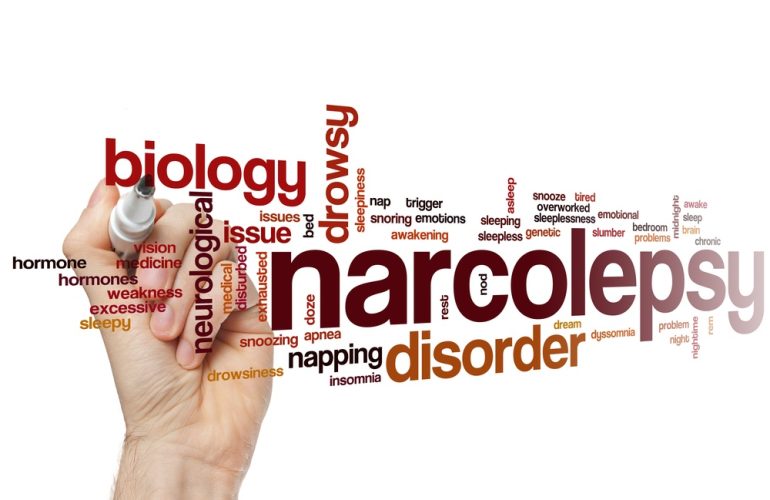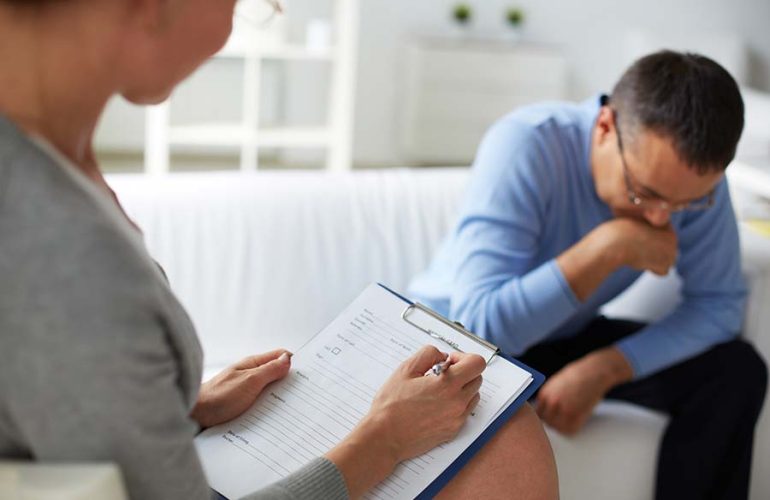Sleep apnea and other sleep disorders have become a significant health problem in the U.S. And, according to the American Sleep Apnea Association, around 22 million individuals in the U.S. suffer from sleep apnea — 80 percent have undiagnosed moderate to severe obstructive sleep apnea (OSA).
Dr. Timothy Morgenthaler, American Academy of Sleep Medicine’s President and a national Healthy Sleep Project spokesperson says OSA is affecting millions of American’s health, and over the last couple decades, the issue has become worse. An important part of being able to improve chronic disease management and reduce health care spending is the effective sleep apnea treatment.
What is Obstructive Sleep Apnea (OSA)?
OSA is the most common type of sleep apnea. It’s marked by upper airway obstructions repeatedly occurring while you sleep that causes apnea (stopped breathing) with a complete obstruction or hypopnea (shallower than normal breathing) with a partial obstruction.
When breathing in normally, your air flows through your mouth and/or nose, through to the back of your throat and then down into your lungs. When breathing out, the reverse occurs — the air flows through your throat from your lungs and then out your mouth and/or nose. Your breathing pretty much stays the same when you fall asleep with the exception of your rate of breathing slowing down a bit.
OSA occurs when your airway becomes blocked repeatedly despite your effort to breathe. When you have frequent episodes of both partial and complete blockage, doctors refer to this as obstructive sleep apnea-hypopnea.
OSA episodes tend to lead to measurable blood oxygen saturation drops that return to baseline levels when you resume breathing. OSA episodes generally stop with the individual briefly waking up to reopen their airway.
Untreated OSA can lead to:
- Stroke
- High blood pressure
- Atrial fibrillation
- Chronic heart failure
- Other cardiovascular problems
OSA is also associated with depression and type 2 diabetes and contributes to many heavy machinery or traffic accidents due to the persistent drowsiness OSA patients suffer before they realize they have the disorder and receive treatment.
OSA patients snore loudly and can often choke and/or gasp between episodes. Because of the airway obstruction pattern and multiple awakenings during the night, OSA patients have sleep fragmentation and usually struggle with excessive daytime sleepiness (EDS).
Anyone of any age can develop OSA, including children and infants. However, it tends to affect men over 40 years of age the most, particularly those who are obese or overweight.
Symptoms and Signs of Obstructive Sleep Apnea (OSA)
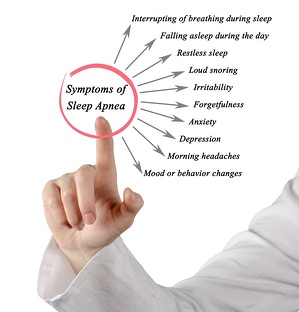
Common obstructive sleep apnea symptoms include:
- Snoring
- Fatigue or daytime sleepiness
- Morning headaches
- A sore throat or dry mouth when you wake up
- Problems with sex
- Night sweats
- Forgetfulness, irritability, depression or trouble concentrating
- Restlessness during sleep
- Trouble getting up in the morning
- Suddenly waking up feeling like you’re choking or gasping
Those sharing a bed with you will likely notice these signs before you do.
Symptoms of OSA in children might not be so obvious, but could include:
- Drooling or choking
- Bedwetting
- Ribcage moves inward when exhaling
- Sweating a lot during the night
- Snoring
- Problem at school
- Teeth grinding
- Sleepiness or sluggishness (may seem like laziness in school)
- Absence or pauses in breathing
- Restlessness in bed
- Behavior or learning disorders
- Unusual sleeping positions like sleeping with a hyperextended neck or sleeping on the knees and hands
If you notice any signs of obstructive sleep apnea, talk with your doctor since other conditions and problems can cause these symptoms too.
How to Diagnose Obstructive Sleep Apnea
The OSA symptoms and signs described above should lead you to request an evaluation with your doctor. Your doctor can evaluate your symptoms and other issues you’re experiencing and determine if they should refer you to a sleep specialist for a sleep study.
For your doctor to diagnose OSA, they’ll make their evaluation based on your symptoms and signs, a physical exam and testing. Then, they make their referral for further evaluation by a sleep technologist.
To come up with the diagnosis, your doctor might consider things like:
- If you have a family history of a sleep disorder like sleep apnea.
- The symptoms you’re experiencing.
- If you have any sleep apnea risk factors.
- If you have any complications of untreated or undiagnosed sleep apnea like type 2 diabetes, atrial fibrillation or hard-to-control high blood pressure.
They’ll perform a physical exam on you and will take a look at the back of your throat, nose and mouth for abnormalities and extra tissue. They’ll check your blood pressure and measure your waist and neck circumference.
A sleep medicine specialist might conduct further evaluations to come up with your diagnosis, determine how severe your condition is and establish your treatment plan. You may require an overnight stay so the sleep professional can monitor your breathing and other bodily functions while you’re sleeping.
Sleep center studies can:
- Detect high or low activity levels in your muscles that control your breathing.
- Detect apnea events when your breathing slows or stops during sleep.
- Monitor your heart and brain activity while you sleep.
- Monitor your blood oxygen levels while you sleep.
The sleep professional will likely use tests to detect OSA such as:
Polysomnography
A polysomnography is an attended overnight sleep study performed in a sleep center. During a polysomnography, the technician will hook you up to special equipment that monitors your:
- Brain, heart and lung activity
- Leg and arm movements
- Breathing patterns
- Blood oxygen levels
They’ll either have you do a split-night sleep study or a full-night study where they’ll monitor you all night.
During a split-night sleep study, they’ll monitor you for the first part of the night. If they diagnose you with OSA, the staff will wake you up and put you on a continuous positive airway pressure (CPAP) machine for the second part of the night.
Your doctor can use this test to diagnose OSA and if appropriate, adjust positive airway pressure therapy. The doctor can also use this sleep study to help them rule out narcolepsy, periodic limb movements of sleep or other sleep disorders that can also lead to EDS, but require a different type of treatment.
Home Sleep Apnea Testing (HSAT)
In some cases, your doctor might allow you to perform a home sleep apnea test which is an at-home version of the polysomnography. This test too can diagnose OSA. It involves measuring things like:
- Breathing patterns
- Airflow
- Snoring intensity
- Blood oxygen levels
- Limb movements
Your doctor might also give you a referral to an ear, nose and throat (ENT) doctor to rule out a throat or nose anatomic blockage.
The severity level of your OSA diagnosis may depend on how many sleep apnea episodes you have each hour throughout your sleep study. Measurements may look something like this:
- Mild OSA: Five to 14 apnea episodes in one hour
- Moderate OSA: 15 to 29 apnea episodes in one hour
- Severe OSA: 30 or more apnea episodes in one hour
A common and highly effective treatment for moderate to severe obstructive sleep apnea in adults is a type of positive airway pressure like CPAP. Other types of treatments could include avoid sleeping on your back, losing weight, a nighttime dental device or a type of surgical procedure. Of course, if your doctor gives you an OSA diagnosis, they’ll go over your treatment options and determine which one is best for you.
Get Tested for Obstructive Sleep Apnea (OSA)
If you think that you are a loved one has obstructive sleep apnea, contact us here at Sweet Sleep Studio LLC in Kansas today for a consultation. Dr. Abid Bhat, MD MBA, Sleep Medicine Specialist, and schedule you with either a in-center polysomnography or a Home Sleep Apnea Test (HSAT).
All of us here at Sweet Sleep Studio LLC are dedicated to your improved sleep and health. We are dedicated to help our patients sleep better and maintain a positive state of mind and body so they can enjoy life more. Call us today at (913) 221-6059 or complete our online form.
